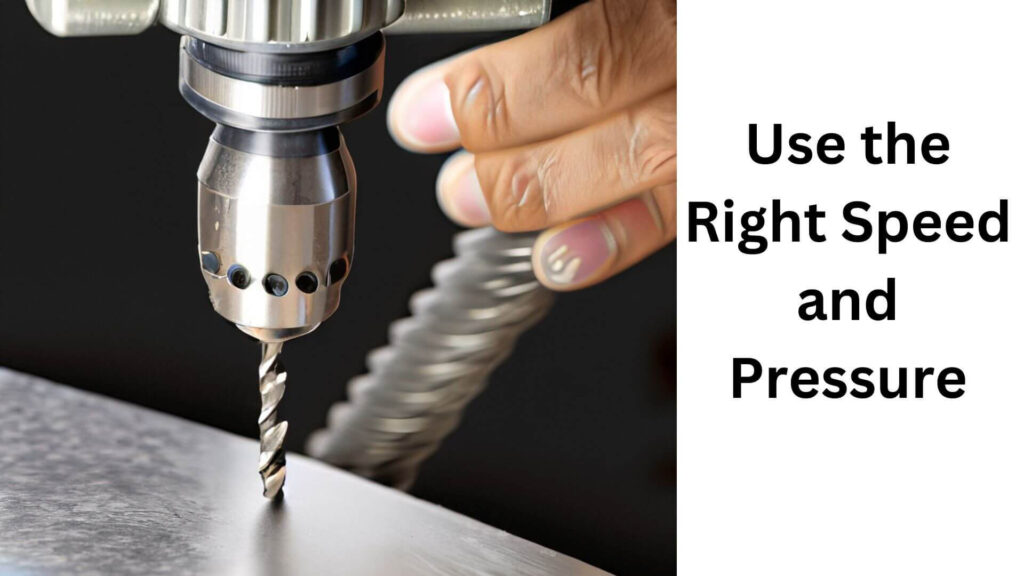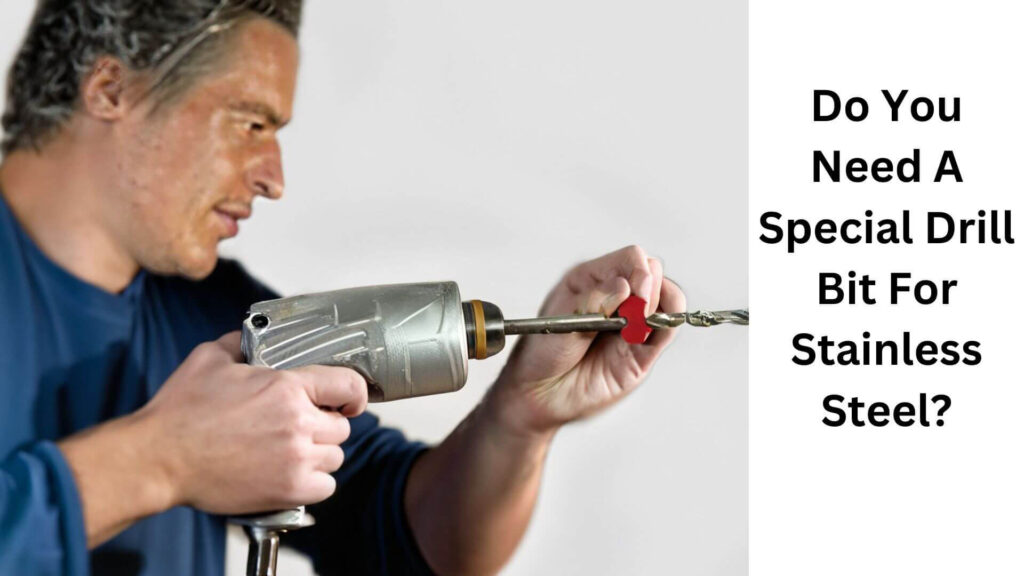Are you planning on drilling through stainless steel? If so, do you need a special drill bit for stainless steel? The short answer is: you will need a particular drill bit for stainless steel.
Stainless steel is a hard, tough material that can be difficult to drill through without the right tools. Using the wrong drill bit can lead to dulling, breakage, or damage to your workpiece.
In this article, I’ll explore the properties of stainless steel and the challenges of drilling it. I’ll also discuss the importance of using the right drill bit and the types of drill bits available.
Read on to discover the best practices for drilling through stainless steel like a pro.
Table of Contents
Understanding Stainless Steel
Before you dive into drilling stainless steel, let’s first understand what it is. Stainless steel is an alloy of iron, carbon, and other elements such as chromium, nickel, and molybdenum. These elements give stainless steel unique properties, such as corrosion resistance, high strength, and heat resistance.
Several types of stainless steel are available, each with its own properties and characteristics. Some of the commonly used types include austenitic, ferritic, martensitic, and duplex stainless steel.
Why Use a Special Drill Bit for Stainless Steel?

There are several key points to using a particular drill bit for stainless steel:
- Material Hardness: Stainless steel is a complex and durable material, requiring a specialized drill bit to penetrate its surface effectively without causing damage to the bit or the material.
- Heat Resistance: Special drill bits for stainless steel are designed to withstand high temperatures generated during drilling, reducing the risk of overheating and prolonging the life of the bit.
- Reduced Work Hardening: Stainless steel tends to harden when drilled with a standard bit, making penetrating even more challenging. Specialized bits minimize work hardening, allowing for smoother drilling.
- Precision and Cleanliness: Special drill bits for stainless steel are designed to create clean, precise holes with minimal burring or deformation, ensuring a professional finish.
- Cobalt or Carbide Construction: These drill bits are typically made from cobalt or carbide. They are known for their durability and ability to maintain a sharp cutting edge, even when drilling through rigid materials like stainless steel.
- Efficiency and Speed: Using a specialized drill bit for stainless steel increases drilling efficiency and speed, reducing the time and effort required to complete the task.
- Longer Tool Life: Investing in a particular drill bit for stainless steel can extend the life of your tools, as they are less likely to wear out or break during use.
Read More: Will Titanium Drill Bit Go Through Stainless Steel
Types of Drill Bits for Stainless Steel
Here’s a table outlining the properties of all three types of drill bits for stainless steel and their advantages and disadvantages:
| Properties of Drill Bits for Stainless Steel | Advantages | Disadvantages |
| Cobalt Drill Bits | Made from a high-speed steel alloy with up to 8% cobalt content | More expensive than other types of drill bits |
| More challenging and more heat-resistant than other types of drill bits | It can be brittle and prone to breaking if not used correctly | |
| Ideal for use with harder metals and alloys | It may require a more robust drill with higher torque to use effectively | |
| Carbide Drill Bits | Made from tungsten carbide, a dense, hard material | Can maintain sharpness for more extended periods of time compared to other drill bits |
| Ideal for use with abrasive materials like stainless steel, cast iron, and titanium | It can be more expensive than other types of drill bits | |
| It Can produce smoother and more accurate holes. | It may require a more robust drill with higher torque to use effectively. | |
| High-Speed Steel Drill Bits | Made from high-speed steel, a durable, heat-resistant material | Less expensive than other types of drill bits. |
| It can drill through various materials, including stainless steel, wood, and plastic. | It may need to be sharpened more frequently than other types of drill bits. | |
| Available in various shapes and sizes for different drilling applications, | It may not be as effective as other types of drill bits when drilling through harder metals. |
Each drill bit type has unique properties and advantages, and disadvantages. When choosing a drill bit for stainless steel, it’s essential to consider the type of material you’ll be drilling and the level of precision and accuracy you require.
Selecting the right drill bit and using proper drilling techniques can achieve clean, accurate holes in even the most rigid stainless steel materials.
Read More: What Angle Drill Bit For Stainless Steel?
What Type Of Drill Bit Do You Need For Stainless Steel?
When drilling through stainless steel, it’s essential to use the appropriate type of drill bit to avoid damaging the material or causing the drill bit to wear down quickly.
For drilling through stainless steel, it’s best to use a high-speed steel (HSS) drill bit designed specifically for metal use.
Alternatively, you can also use a cobalt drill bit, a type of HSS drill bit formulated to work well with hard metals such as stainless steel.
Stain steel is a hard and tough material, so using a slow speed and applying consistent pressure while drilling is essential.
Too much speed or pressure can cause the drill bit to overheat and wear down quickly, damaging the drilled material.
In summary, use high-speed steel (HSS) drill bit or a cobalt drill bit to drill through stainless steel, ensuring slow speed and consistent pressure.
Best Practices for Drilling Stainless Steel
When drilling stainless steel, using the right drill bit and following best practices is essential to ensure a successful and safe operation.
1. Choosing the Right Drill Bit.
Choosing the right drill bit is crucial for drilling through stainless steel. As discussed earlier, cobalt, carbide, and high-speed steel drill bits are all suitable for drilling through stainless steel.
However, the right drill bit will depend on the specific application and the material’s thickness.
2. Using the Right Speed and Pressure

Using the right speed and pressure is also vital for drilling through stainless steel. The right speed will depend on the type of drill bit being used and the thickness of the material being drilled. The correct pressure will depend on the hardness of the material being drilled.
3. Cooling and Lubrication
Cooling and lubrication are essential when drilling through stainless steel. Cooling helps to prevent overheating and prolongs the life of the drill bit.
Lubrication, on the other hand, helps to reduce friction and heat, which can cause the drill bit to wear out quickly. It also helps to prevent the material from sticking to the drill bit, which can lead to breakage.
You can use a coolant or cutting oil to cool and lubricate the drill bit. Apply the lubricant to the drill bit and the drilled material to ensure smooth and efficient drilling.
4. Avoiding Heat Build-up
can also be problematic when drilling through stainless steel. It can cause the material to warp or even melt, leading to poor-quality holes or damage to the drill bit.
To avoid heat build-up, taking frequent breaks and allowing the material and the drill bit to cool down is essential.
5. Drilling Techniques
Finally, the drilling technique can also affect the drill bit’s performance and the holes’ quality.
When drilling into stainless steel, it’s crucial to begin with a small pilot hole and progressively enlarge it.This will help to prevent the drill bit from wandering and ensure accurate and clean holes.
Read More: How to Remove a Broken Drill Bit from Stainless Steel?
Why Use the Right Speed and Pressure?
When drilling stainless steel, using the right speed and pressure is critical for achieving clean, accurate holes without damaging the material or the drill bit.
The speed and pressure you use will depend on the type of drill bit you’re using, the size of the hole you’re drilling, and the thickness and hardness of the stainless steel.
Using too much pressure or drilling at too high a speed can cause the drill bit to overheat, leading to dullness or even breakage.
On the other hand, using too little pressure or drilling too slowly can cause the drill bit to bind, which can also lead to breakage.
To find the right speed and pressure for your drilling application, refer to the manufacturer’s recommendations for your drill bit.
You can also start with a lower speed and pressure and gradually increase it as needed while monitoring the temperature of the drill bit and the material being drilled. With practice and experience, you can determine the right speed and pressure for any drilling task.
Lubrication for Stainless Steel Drilling

Lubrication is an essential aspect of drilling stainless steel, as it helps to reduce friction and heat buildup, which can cause the drill bit to dull or even break.
Several types of lubricants can be used for stainless steel drilling, including cutting oils, lubricating pastes, and sprays.
- Cutting oils are the most common lubricant used for drilling stainless steel. They are specifically designed to cool and lubricate the drill bit, reducing friction and extending the life of the bit.
Cutting oils come in different varieties, such as mineral oil, synthetic oil, and vegetable-based oil, and can be applied using a brush, spray bottle, or pump.
- Lubricating pastes are another option for stainless steel drilling. These are thicker than cutting oils and can provide better lubrication for more heavy-duty drilling tasks.
Lubricating pastes are applied directly to the drill bit or the material being drilled and can help prolong the bit’s life while improving the hole’s quality.
- Spray lubricants are a convenient option for on-the-go drilling applications. They are typically silicone-based and can be sprayed directly onto the drill bit or drilled material.
Spray lubricants provide quick and easy lubrication without the mess of cutting oils or pastes.
Regardless of the type of lubricant you choose, applying it regularly during drilling is essential to ensure optimal lubrication and cooling. This will help prolong your drill bit’s life and improve the quality of your holes.
Faqs For Do You Need A Special Drill Bit For Stainless Steel?
Can I use a regular drill bit for stainless steel?
Using a regular drill bit for stainless steel is not recommended because it is not strong enough to handle the hardness and toughness of stainless steel.
What makes a drill bit suitable for stainless steel?
It should also have a sharp point and firm cutting edges to penetrate the hard surface of stainless steel and withstand the heat and friction generated during the drilling process.
Is it necessary to use a particular drill bit for stainless steel?
Yes, it is necessary to use a particular drill bit for stainless steel because it is a complex and challenging material that requires a more robust and sharper drill bit than those used for softer materials such as wood or plastic.
What happens if I use the wrong drill bit for stainless steel?
Using the wrong drill bit for stainless steel can cause the drill bit to break, wear out quickly, or produce an uneven or damaged hole in the stainless steel.
Final Verdict
Drilling through stainless steel can be challenging, but using the right drill bit and following best practices can achieve accurate and clean holes.
Choosing the right drill bit, using the right speed and pressure, and lubricating the drill bit and the material being drilled is essential.
By following these guidelines, you can ensure a successful and safe drilling operation.

Hey, I am MD Hrithik Hossain, I’m a huge fan of DIY crafts. My workshop is where I spend most of my spare time, and I’m always working on some project. To that end, I’d like to share some of my knowledge and experience with you in power tools, woodworking, and other specialized materials fabrication.
I will guide you with genuine knowledge that can assist you with deciding whether a drill is appropriate according to your requirements or not. If you want to find the best drill and know which type of drill is most suited for your needs, then I can guide you with my expertise. My passion lies in helping others find the correct products they need at an affordable price.


